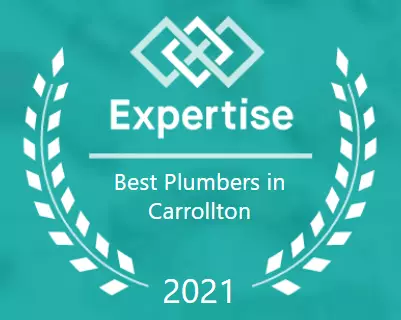Running an HVAC system can get expensive, especially when you live in a very hot or cold climate (say, Texas in the summer—or winter, for that matter). Keeping costs down is all about energy efficiency. If your HVAC unit is operating at peak efficiency, it will use less energy overall. But how do you know if you have an energy efficient HVAC system—and how can you make sure it stays that way?
Why Does Energy Efficiency Matter?
1. Costs Less to Run
Energy efficiency is an important concept for all sorts of household appliances such as ovens, washers, and dryers. The more energy efficient the appliance is, the less it costs to run. This same concept applies to home air conditioners and heating systems, too. The more energy efficient your HVAC system is, the lower the running costs will be.
Because energy efficiency affects long-term running costs, it’s important to factor this in when considering how much you want to spend on a new HVAC system. If you choose an HVAC system with low up-front costs, it may end up costing you more over time if it has a low energy efficiency rating.
2. Better for the Environment
Opting for a more energy-efficient system is also an environmentally friendly choice. Choosing more efficient options reduces your home’s overall energy usage and your its carbon footprint. If everyone chips in a bit to live healthier and greener, we will help not only ourselves but future generations too.
3. Keeps You More Comfortable

An energy efficient system is better able to control your home’s temperature and keep it at a level you’re comfortable with.
This isn’t just about the specific system you choose—it’s also about installation.The right-sized unit for your home and efficient placement of ducts and vents also factor into energy efficiency. Properly sealing a system during installation is a cost-effective way to get the most out of the system’s capacity. A smart installation helps the system to maintain consistent and comfortable temperatures.
How Do You Know if Your Home HVAC System Is Energy Efficient?
For an HVAC system, there are three main factors to look at in determining how energy efficient that system is: the SEER, the Energy Star rating, and the furnace efficiency.
SEER

SEER stands for Seasonal Energy Efficiency Ratio. This term measures how efficiently the system works over an entire year. The more energy efficient the HVAC is, the higher its SEER.
Most HVAC systems available to homeowners are in the range of 14 to 20 SEER. Opting for a higher SEER increases the purchase price of the system, but since the system uses less energy, your utility bills will be lower.
New Minimum SEER Rating in 2023
As of January 1, 2023, minimum SEER ratings have been increased. Minimum SEER ratings are increased periodically to reflect improvements in HVAC technology and energy efficiency.
In northern states the minimum SEER is now 14. In southern states, including Texas, the minimum SEER rating is now 15.
This means all new HVAC installations in Texas must have a SEER rating of at least 15. It’s no longer legal to buy or install HVAC equipment with a SEER of 14 or less. This includes all kinds of HVAC components—mini splits and heat pumps, as well as central forced air HVAC systems.
This doesn’t apply to any heating and cooling systems that are already currently installed. Since the changes only apply to new systems, there are no legal penalties for having a SEER 14 or under system in your home. It does mean that next time you want to upgrade, you’ll be looking for a SEER 15 or higher rating.
The changes to SEER ratings also mean the cost of new HVAC installations will increase. This isn’t as bad as it sounds because higher SEER ratings mean higher energy efficiency. That translates into lower energy bills, meaning you’ll recoup the upfront costs of a new HVAC installation over time, thanks to ongoing energy savings.
Furnace Efficiency
If your HVAC system uses a furnace for heating, then Annual Fuel Utilization Efficiency, or AFUE, is another important measurement to look at. This rating is applied to gas furnaces. The higher the AFUE is, the more efficient your heating system will be.
AFUE is expressed as a percentage, and anything over 90% is considered energy efficient. In states with cold winter climates, over 95% is recommended.
Energy Star Rating
Another useful rating to look for is the Energy Star Rating. To qualify for Energy Star certification, units must achieve a certain minimum SEER or AFUE rating.
- HVAC units must have a minimum of 14.5 SEER to qualify for an Energy Star rating.
- Gas furnaces must have a rating of 90% or more (in southern states) to qualify for an Energy Star rating.
- In northern states, gas furnaces must have an AFUE of at least 95%.
- For oil furnaces the minimum AFUE is 85%.
Choosing an Energy Star-certified HVAC or furnace can pay off in more ways than one. You may even qualify for a rebate or tax credit depending on the model you choose!
How to Tell If Your Current Home HVAC Is Losing Energy Efficiency

All HVAC systems become less energy efficient over time. This happens for a range of reasons, but for the most part it comes down to mechanical wear-and-tear. These systems have lots of moving parts and components, and they wear down over time. As a result, the system needs more energy to maintain whatever temperature you set at the thermostat.
If your home air conditioner or central heating system is losing energy efficiency, the signs won’t go unnoticed for long.
Higher energy bills:Either a gradual or a sudden increase in the size of your energy bill may indicate loss of efficiency. This happens because the system is using more energy to maintain the correct temperature.
Temperature troubles: Pay attention to home cooling and heating. If your HVAC is having trouble maintaining the temperature you set on the thermostat, it may be a sign that it’s losing energy efficiency. Or, if you notice that your system is running much longer cycles, it may be working harder than normal to maintain temperature.
High humidity:Along with temperature control, HVAC systems also improve indoor air quality by reducing humidity. If your HVAC is losing efficiency, you may notice that it’s more humid than usual. This can happen if the HVAC’s evaporator coils aren’t getting cold enough. This reduces the ability of the system to remove moisture from the air.
Repairs are needed more often: An HVAC system needs twice-yearly maintenance to keep it in good shape. But if you’re often making additional calls to your HVAC technician for repairs, it could be a sign that the whole system is starting to wear out. And, at this point, it’s likely that the system is no longer operating efficiently.
The system is over 10 years old: Mechanical systems can’t last forever. As it gets older, the system will sustain wear-and-tear that requires repairing or replacing multiple parts. This typically increases around the 10-year-mark. If you’re needing extra repairs on an older system, it’s time to consider a new HVAC system. It’s often more cost-effective to replace an old, failing system than to repair it. Even though the initial cost may be more, the investment will more than pay for itself in both the comfort and peace of mind that the system will operate when you need it most and in the reduction in energy bills you will notice.
Can You Make Your Home HVAC System More Energy Efficient?
For many home HVAC systems, there are changes you can make to improve energy efficiency. But for very old systems, often the only way to make a substantial improvement is to replace the system with a new one.
Some possible ways to improve HVAC energy efficiency include:
1. Regular Maintenance

The single most important way to keep your home air conditioning and heating systems working efficiently is to keep up with maintenance tasks. Homeowners can do some of these tasks, such as cleaning and changing filters.
However, some maintenance tasks—such as checking wiring and electrical connections—are best left to professionals. The optimal schedule for professional servicing is twice a year. Spring and fall are good times for this, as it means your HVAC is then in the best possible shape for the increase in usage that comes in summer and winter.
Another piece of HVAC maintenance is getting the repairs as soon as you notice them. If you suspect you’re in need of a furnace or AC repair, don’t delay or wait for your next scheduled maintenance appointment. Keep up your twice-a-year AC and furnace maintenance appointments, but don’t be afraid to call earlier when something doesn’t seem right. Remember that the earlier a problem is caught, the more likely it is that it can be repaired before it causes damage to other components.
If you want to take measures to not only protect your unit but also the air your family breathes, consider having an air scrubber installed in your unit. CW can install a system that will not only kill bacteria, viruses, and mildew causing growth in the air and on surfaces in your home, but also will help protect the inside of your unit from accumulating a lot of dust. After an Aerus Air Scrubber is installed in your home, dust that is floating in your home will become significantly less, leading to less dust to get trapped inside the components of your system-a great investment for the health of your system and your family!
2. Ductwork Maintenance
Many air conditioners and central heating systems use ducts to transfer air around the home. If these ducts are leaky or poorly-insulated, then the energy efficiency of the entire system is reduced. In the average home, up to 30% of air is lost due to leakage. That means a lot of wasted energy and higher energy bills. So, keeping your ductwork in good shape is just as essential as any other part of HVAC maintenance.
3. Maintaining Airflow Around the Condenser
Keeping filters and vents clean and free from any obstructions is essential to keep air flowing freely throughout a central air conditioning or heating system. Just as important is making sure that the outdoor condenser unit is kept clean and free from obstructions. In a central air conditioning system, this unit is responsible for dispersing heat outside. Allowing grass, shrubs, or trees to overgrow around the unit can prevent it from doing this and can tank your system’s energy efficiency.
4. Installing a Programmable Thermostat
A programmable thermostat lets you change the thermostat setting automatically depending on the time of day. For instance, this can let you turn the system off during the day when nobody’s home, then turn it on just before people start getting home from school or work. Some newer systems even have apps that let you control the thermostat remotely, using your phone.
Another way to use thermostats to improve your HVAC energy efficiency is to use multiple thermostats to control temperature in different rooms. Independent temperature control means that you don’t have to heat or cool rooms you aren’t using, so the system uses less energy overall.
An Energy Efficient HVAC System Means Greater Comfort and Lower Energy Bills
When shopping for a new HVAC system, it’s easy to look at the higher price tag on energy efficient models and think they’re too expensive to consider purchasing. But it’s important to remember that the cost of an HVAC is more than just what you pay up-front—it’s the long-term energy costs, too. When you buy with energy efficiency in mind, you save money in the long run, thanks to lower energy bills. You’ll also benefit from greater comfort during even the hottest days of summer! Call CW Service Pros to discuss what option is right for you and your family.

















